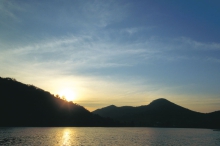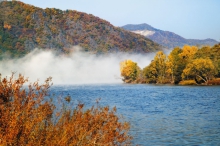One of the most precious parts of the Protected Landscape Area known as the Elbe (Labské) Sandstone. The River Elbe eroded a deep canyon through the chalky sediments. In places it is 300 m deep and it is the largest sandstone canyon in Europe. In the bottom part of the canyon there is old crystallite substratum. The Elbe Canyon is home to many endangered, protected and rare species. On the alluvial plains along the river, which are full of gravel and sand, you can find Corrigiola litorale (Strapwort, last place in the CR, seriously endangered plant species), but you can also spot the European beaver (critically endangered species), which has come back to the banks of the Elbe after many decades. The canyon is a nesting place for, among others, the Peregrine Falcon, the Eurasian Eagle-owl, the European Peduline Tit and the Common Sandpiper. Particularly the right banks of the Elbe are still covered in extensive woods, including woodland meadows on the banks of the river, beech wood areas along the banks of the canyon and also the relict pinewoods along the edges of the sandstone rocks. The unique landscape value of this area is more than evident when viewed from above (observation points at Belvedér at Labská Stráň, Růžový hřeben). An international railway line and a road intersect the canyon. Nowadays both the natural habitat and landscape of the canyon are under threat by the planned water construction in Prostřední Žleb.






































